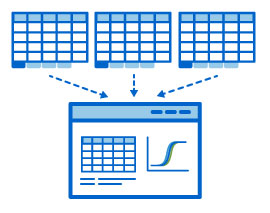With massive increases in data collection, scientists must diligently apply Luminex data management practices, well-defined quality controls, and consistent analyses¹ in order to be efficient and effective. The Luminex xMAP technology is widely used in research, clinical trials, and diagnostics as it provides a multiplexed immunoassay platform to measure complex humoral responses. With instrumentation and bead technology improving, scientists are able to measure larger numbers of analytes on a greater number of samples.
Although typical Luminex xMAP exports are easy to read, they are often exported as multi-tab files that require human interaction and manipulation of the data in order to perform comprehensive analysis. Standard analysis mechanisms that involve manual processing of data are arduous and prone to errors. Results and visualizations of Luminex data from bioinformatics software are often shared without comprehensive annotations on how the analysis was performed; leaving out valuable background information such as well-exclusions, curve fits, and background calculations.
Utilizing LabKey SDMS for Luminex data management helps standardize the workflow of transforming instrument-generated outputs into valuable data visualizations and ensures that valuable contextual information is preserved.
Enhancing Luminex Data Management
The SDMS software platform helps research teams enhance their management of Luminex data by:
 Providing support for multi-tabular excel output files and converting them into easy-to-read grids
Providing support for multi-tabular excel output files and converting them into easy-to-read grids- Allowing users to attach metadata about Luminex runs, increasing traceability of data
- Providing a single platform where raw data, transformed data, and analyzed data are linked and easy to track
Improving Quality Control of Luminex Data
 LabKey SDMS’s Luminex data management tools help labs improve quality control of their data by:
LabKey SDMS’s Luminex data management tools help labs improve quality control of their data by:
- Automatically flagging outliers based on expected values
- Tracking data exclusions made by users
- Providing users with tools to track QC metrics across runs using Levey-Jennings plots
Ensuring Provenance & Reproducibility of Luminex Analyses
LabKey SDMS helps teams maintain data provenance and conduct reproducible analysis by:
 Logging changes to data records and allowing scientists to view the history of data transformations from the raw file to the analyzed results
Logging changes to data records and allowing scientists to view the history of data transformations from the raw file to the analyzed results- Providing built-in visualization tools that can be reused across runs
- Providing mechanisms to securely share data with colleagues, collaborators, or manuscript-reviewers
With the right tools, scientists can maintain a comprehensive, error-free catalog of Luminex data and analyses. To learn more about using LabKey SDMS to manage Luminex data, check out the Luminex documentation library on the LabKey Support Portal or request a demo.
¹ Eckels J, Nathe C, Nelson EK, et al. Quality control, analysis and secure sharing of Luminex® immunoassay data using the open source LabKey Server platform. BMC Bioinformatics. 2013;14:145. Published 2013 Apr 30. doi:10.1186/1471-2105-14-145
